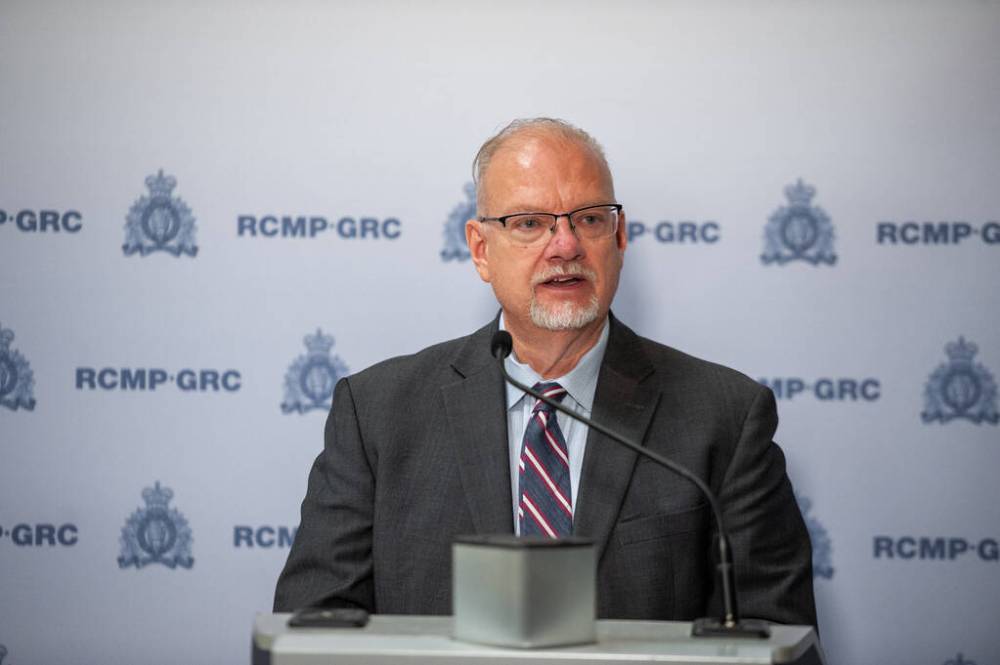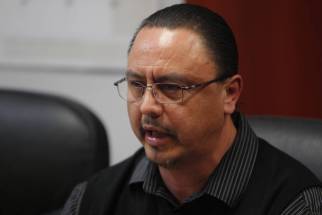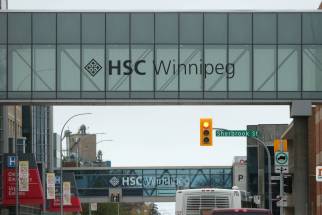Manitoba Mounties toil under 20 per cent vacancy rate: justice minister
Read this article for free:
or
Already have an account? Log in here »
To continue reading, please subscribe:
Monthly Digital Subscription
$0 for the first 4 weeks*
- Enjoy unlimited reading on winnipegfreepress.com
- Read the E-Edition, our digital replica newspaper
- Access News Break, our award-winning app
- Play interactive puzzles
*No charge for 4 weeks then price increases to the regular rate of $19.00 plus GST every four weeks. Offer available to new and qualified returning subscribers only. Cancel any time.
Monthly Digital Subscription
$4.75/week*
- Enjoy unlimited reading on winnipegfreepress.com
- Read the E-Edition, our digital replica newspaper
- Access News Break, our award-winning app
- Play interactive puzzles
*Billed as $19 plus GST every four weeks. Cancel any time.
To continue reading, please subscribe:
Add Free Press access to your Brandon Sun subscription for only an additional
$1 for the first 4 weeks*
*Your next subscription payment will increase by $1.00 and you will be charged $16.99 plus GST for four weeks. After four weeks, your payment will increase to $23.99 plus GST every four weeks.
Read unlimited articles for free today:
or
Already have an account? Log in here »
Hey there, time traveller!
This article was published 23/08/2022 (1202 days ago), so information in it may no longer be current.
OTTAWA — Manitoba Mounties are struggling to respond to crime as their workforce is crippled by a vacancy rate of 20 per cent and the federal government is under increasing pressure to bolster RCMP ranks.
The national police force has reported that Manitoba RCMP had the highest job vacancy rate: six per cent of budgeted positions weren’t filled as of April 2021. However, Justice Minister Kelvin Goertzen said that figure, which represents about 60 positions, misses the mark because it doesn’t include Mounties who are away from work for extended periods, such as for maternity or disability leave.
“When you combine the two, it’s closer to 20 per cent,” Goertzen told the Free Press.
“That means that just over 200 positions that aren’t filled — either because they’re not actually filled, or those folks are off on some sort of a leave.”
Goertzen has requested a meeting with his federal counterpart, Public Safety Minister Marco Mendicino, and has asked him to address the staffing shortage.
On Tuesday, Goertzen said a staffing strategy must look at why the RCMP has trouble attracting recruits, and why Mounties are leaving the force.
ETHAN CAIRNS / WINNIPEG FREE PRESS FILES On Tuesday, Justice Minister Kelvin Goertzen said a staffing strategy must look at why the RCMP has trouble attracting recruits, and why Mounties are leaving the force.
The National Police Federation, a labour union, has testified about a structural staffing shortfall that was exacerbated when COVID-19 restricted the number of cadets who could be trained at the RCMP depot in Regina.
Goertzen said Manitoba Justice and the RCMP have provided him with data that corroborates that concern.
“Our understanding is that things may get worse before they have any chance of getting better, because retirements are outpacing recruitment,” he said.
“I believe Minister Mendicino and the federal government understand the importance of the issue — I just need to see a specific plan.”
Mendicino’s office did not provide a comment.
Goertzen said the public has noticed RCMP presence has diminished, and feel they don’t get timely responses to property crimes, for example.
“Typically in a lot of rural and northern areas, you get a lot of detachments that are short-staffed,” said Goertzen.
“Those are real, tangible things that have an impact.”
He said boosting the ranks would make it safer for officers, too.
“Our understanding is that things may get worse before they have any chance of getting better, because retirements are outpacing recruitment.” – Justice Minister Kelvin Goertzen
Goertzen reiterated calls for more federal cash for First Nations policing, in which bands and tribal councils hire officers and provide culturally informed training. Manitoba has the highest proportion of First Nations of all provinces, Goertzen noted.
“It doesn’t solve all the RCMP problems, but it would certainly go a long way in helping staff in a number of places in northern Manitoba,” he said.
RCMP would not confirm what percentage of Manitoba staff are on leaves of absence.
“The Manitoba RCMP has regular discussions with Manitoba Justice officials on a variety of policing matters within the province; this includes vacancy rates,” wrote spokesman Robert Cyrenne.
“With the RCMP being a national police force and with transfers, promotions, retirements, new recruits, parental leave, sick leave and on-the-job injuries occurring on a daily basis; the numbers regularly change and only represent a snapshot in time.”
DARRYL DYCK / THE CANADIAN PRESS FILES The national police force has reported that Manitoba RCMP had the highest job vacancy rate: six per cent of budgeted positions weren’t filled as of April 2021.
He noted that the six per cent absence of funded positions in 2021 is a rate that “has stayed relatively the same over the last several years.”
The 2017 vacancy rate was 5.8 per cent, for example.
“The RCMP in Manitoba manages any vacancies to ensure the impact is felt in a minimal way,” Cyrenne wrote, such as by co-ordinating shifts and deploying officers from one area of the province to another.
Criminologists have said forces across North America are struggling to recruit due to several factors, including the erosion of trust toward police, the public’s growing desire to tackle the social problems that drive crime, and a job made more complex by online crime and drug crises.
dylan.robertson@freepress.mb.ca





